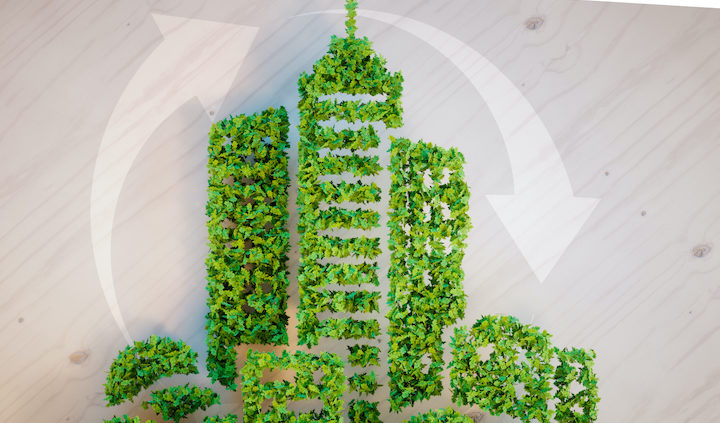What Is Sustainable Design in Architecture?
Sustainable design, also known as sustainable architecture or ecological design, is a school of thought that focuses on creating buildings that feature social and ecological sustainability. The main goal of this design philosophy is to promote the health of the building’s occupants as well as reduce the building’s negative effects on the environment.
By minimizing waste, limiting the consumption of non-renewable resources, and using environmentally friendly materials, building designers can create greener, more energy-efficient facilities.
Understanding Sustainable Architecture
One of the key principles behind sustainable architecture is optimizing the potential of the site. For example, if the facility is located in a windy area, windmills could be constructed to help generate power. This example would also help with another principle: minimizing the consumption of non-renewable energy.
A third goal of the design practice is to enhance indoor environmental quality. This could include using materials that have a low volatile organic compound (VOC) emissions rating. This also includes using environmentally friendly products in other areas of the design process.
All of these principles are designed to inform every stage of the facility’s life cycle, from planning to operation, to limit the negative impact it has on the surrounding environment.
Is Sustainable Design Cost-Effective?
Every building designer or architect knows that staying within budget is a primary concern during the construction stage. So it’s no surprise to learn that many worry if trying to design an eco-friendly building will exhaust the budget. The simple answer is no. In fact, there’s evidence that sustainable buildings actually provide many financial rewards to the owners and operators.
For starters, annual operating costs are typically lower in sustainable buildings because of the principle of energy efficiency during the design process. This means that electricity, water, and even maintenance expenses are considered and optimized.
Additionally, these reduced long-term costs don’t necessarily mean higher initial costs. When planned strategically with the right materials, the initial costs of a sustainable design can mirror or beat the costs of a traditional building. Although, some sustainable features may have a higher initial cost, these additions typically pay for themselves quickly through lower maintenance and operational costs.
Aside from monetary benefits, green building design can also benefit building owners and occupants in other ways. For one, occupants of eco-friendly buildings typically experience better overall health, which often translates to better attendance and less absenteeism due to illness. Building owners can benefit from longer building life spans and increased support from the local community.
Using Sustainable Materials
Using sustainable materials is a great way to reduce your building’s carbon footprint. Materials like high-density polyethylene (HDPE) can be used for a variety of applications throughout the facility. HDPE, for example, can be used for bathroom partitions, vanities, and lockers. It’s 100% recyclable, is naturally resistant* to bacteria and rust due to its solid HDPE plastic resisting mold, and mildew, will not absorb water., and produces no VOC emissions.
Using HDPE products can also help your facility to earn points toward Leadership in Energy and Environmental Design (LEED) certification. This rating system helps to evaluate the environmental performance of a building.


